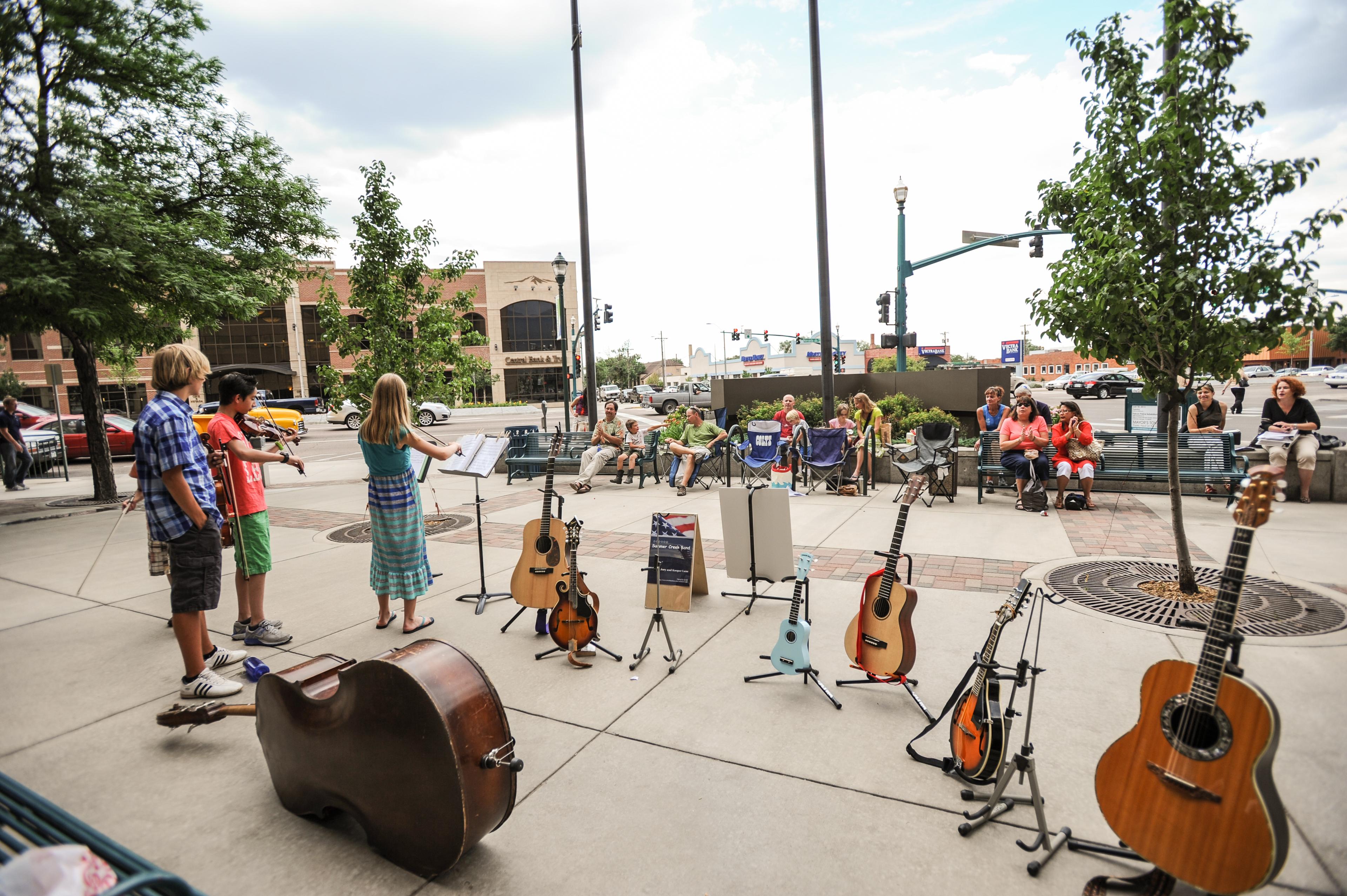
Colorado Springs is known for being a military town. The city's culture and economy are closely tied to the city’s top employers – its army and air force bases.
But now Colorado Springs hopes to become just as well known for its arts scene.
The city is campaigning to earn the designation of Colorado Certified Creative District for its downtown core.
“We’ve got a lot more to offer than military bases and tourist destinations such as Pikes Peak,” Jill Gaebler, a city council member for Colorado Springs, says. “So many people right now just don’t come downtown. They don’t see the benefit. They don’t see what is going on.”
Born of legislation in 2011, the state conceived of the Certified Creative District program to help boost local economies by attracting artists, tourists and new businesses to a designated area.
“If you live here it comes as no surprise that this is an artistic city,” Russ Ware, the owner of The Wild Goose Meeting House, a cafe in downtown Colorado Springs, says. “But if you come from somewhere else, that might be something that you’ve completely missed. Sure, we have a military presence that we are known for – which is great – but it's not everything that this town is about."
The city has been campaigning to join the Certified Creative District program for the past two years and has spent more than $200,000 on programming. The money has helped to fund such attractions as outdoor summer music stages and guided tours of cultural highlights.
There are seven Certified Creative Districts in Colorado. Seven additional districts, including Colorado Springs, are currently vying to win this designation.
Local businesses and community groups are banking that the program will reap economic dividends for Colorado Springs by attracting more people to its downtown core.
Each Certified Creative District in Colorado receives on average $12,000 a year in direct funding from the Boettcher Foundation and Colorado Creative Industries, the government agency that administers the program on behalf of the state of Colorado. The Districts receive an additional $10,000 of indirect funding in the form technical and administrative support through Colorado Creative Industries.
Certified Creative Districts in other states have demonstrated some success.
For example, Louisiana saw an increase of 820 new businesses within the boundaries of its districts since the program began there in 2008, according to that state's 2012 Cultural District report. In Maryland, the state arts council found arts and entertainment districts supported an estimated 4,188 jobs in 2012. Of those new jobs, 920 of them came from new businesses.
Colorado Creative Industries is currently collecting information on tax revenue, property tax values and vacancy rates throughout all of Colorado’s Creative Districts in an effort to gauge how successful the program might be at boosting the local economy.
But the organization isn't ready to analyze and draw conclusions from its findings yet.
“We began compiling baseline data when the programs started two years ago,” Margaret Hunt, director of Colorado Creative Industries, says. “There hasn’t been enough time to reflect economic growth.”
Downtown Colorado Springs may not have access to hard data concerning the success of other similar programs around the state. But anecdotal evidence from people who’ve participated in cultural activities in the area suggests they will return downtown for more.
“Participants in our new Core Culture walking tours remark that the monthly tours give them a great reason to head downtown for the tour and then stay downtown and support local businesses,” Lara Garritano, creative district manager for Downtown Colorado Springs, says.
The potential economic benefits for Colorado Springs in becoming a Certified Creative District are not only about bringing in more people, but also about being less reliant on the military for economic growth.
“We don’t want the military to leave, but we do want to see different types of economic activity,” Tom Zwerlein, professor of finance at the University of Colorado at Colorado Springs and the director of the Southern Colorado Economic Forum, says. “We have to diversify.”
Colorado Creative Industries will review applications from the seven candidate creative districts including the bid from Colorado Springs in June and announce the new creative districts soon after.








